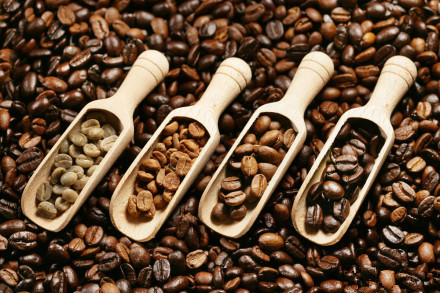Kopi Luwak ill-fated Indonesian Coffee

Indonesia has always been one of the best coffee producers in the world. Java coffee used to be synonymous with sophisticated coffee, while Sumatra and Sulawesi also abound in sophisticated coffee. Coffee arrived in Indonesia early and was brought in by the Dutch in the 17th century, when Ceylon, now Sri Lanka, began to grow coffee because of the Dutch. At that time, Arabica coffee was grown in both Indonesia and Sri Lanka.
At that time, Europeans fought for Indonesian coffee, especially Java coffee, which tasted less bitter. Coffee with low acidity is described as: "good Java coffee has this property, it shows a relatively thick, slightly lighter and less acidic than some other Indonesian coffee." This kind of coffee shows a simple personality and a long aftertaste, with a slight flicker of vegetation in the aftertaste. Compared with other Indonesian coffees, the finish is less long-lasting, but often contains subtle spicy and smoky notes. Java coffee leaves an impression of sweetness on the whole, very soft and rich. " I don't know what Java coffee was like in its heyday, but I was excited when I read it.
This kind of coffee is usually only for Europe at that time, and it has to be transported by sailboats for a long time, which makes the coffee less acidic and tastes very good. In the more prosperous period of shipping, businessmen have to put
Coffee has been stored for several years to get a very good taste, storage also brings more high prices, inferior quality, all kinds of smuggling are not uncommon. By the 1880's, Java coffee reached its peak, but the delicate Arabica coffee plant could not escape the plague. A rust disease hit many areas, including Java, and large tracts of coffee trees died. At that time, only 1/10 Arabica coffee survived in Indonesia, mostly in Sumatra. Later, the Dutch once again brought Africa's stronger robusta coffee, which is more resistant to disease and insect pests, but tasted less than Arabica coffee, and the halo finally left Java.
The old gardens preserved today are now clustered in eastern Java, including Djampit, Blawan, Pancoer, and Kayumas4, all near the Ijen volcano on the Ijen plateau, who have grown the same coffee from the 18th century to the present. But Java is no longer that Java, and when it comes to Indonesian coffee, people talk more about Sumatran mantenin coffee, or perhaps the more exotic coffee Kopi Luwak, the legendary civet coffee. Luwak coffee is known as the most valuable coffee in the world, which is mainly produced in Indonesia's Sumatra, Java and other islands, but it is abnormally sparse. The civets swallow the coffee fruit and unexpectedly dissolve most of the bitterness through "sorrowful twists and turns." leave more delicious coffee.
The coffee was found to be because stingy Dutch gardeners at that time prevented local workers from drinking coffee. In order to obtain this strange fruit, which had been cultivated painstakingly, they had to find another way to find it in the excrement of civets. Through cleaning and grinding, it was made into first-class coffee in the world, and then it was found by the Dutch and became more valuable. Bali, as Indonesia's leading travel destination, is often known for its golden coffee in travel brochures, which is originally a special choice of Golden Mandheling coffee in Sumatra, Indonesia, also known as Golden Manning. Sumatra, which has largely escaped the raids of old diseases, produces Mantenin, one of the most sophisticated coffees in the world, with a slippery flavor and a slightly longer aftertaste than the previous Java coffee, perhaps not as delicate as Java, but more ferocious. The trademark of the golden butterfly can be identified when purchasing.
There are also some cultivation gardens in Bali that have been developed into resorts, such as Munduk Moding, which has been turned into a luxury resort with spa. The resort is close to the Central Lake District of Bali and the Munduk Mountain Station, and the adjacent hills are covered with forests, coffee trees and rice, with attractive surroundings and rooms with local characteristics. Originally, Bali and other seas
Important Notice :
前街咖啡 FrontStreet Coffee has moved to new addredd:
FrontStreet Coffee Address: 315,Donghua East Road,GuangZhou
Tel:020 38364473
- Prev

The aristocratic Guatemala Antigua Coffee in Coffee beans
Guatemala Antigua Coffee is not only smooth, high hardness, good quality, more full-bodied and sour and sweet perfect blending, coupled with a trace of smoky flavor, but also emphasizes its depth and mystery. Guatemala is located in the center of North and South America, and its geographical location is mainly in Central America. Guatemala covers an area of about 108899 square kilometers. The territorial characteristics can be divided into: plateau volcanoes,
- Next

Vietnam Coffee is an ambitious coffee country.
Vietnam's next policy clearly does not just make itself the world's second-largest coffee exporter, because it has so many coffee-loving citizens. In Vietnam, drinking coffee between brothers is as natural as shaking hands. An Australian food guide who has been in Hanoi for seven years is deeply impressed. A cafe in three or five steps is not only a street view of a small city in Vietnam, it seems to be a kind of ceremony. In Vietnam
Related
- Guji coffee producing area of Guji, Ethiopia: Humbela, Shakiso, Wulaga
- What is the most expensive variety of Qiloso in BOP multi-variety group?
- How to store the coffee beans bought home?
- Why are Yemeni coffee beans so rare now?
- Ethiopian Sidamo all Red Fruit Sun Sun Santa Vini Coffee beans
- SOE is mostly sour? What does it mean? Is it a single bean? what's the difference between it and Italian blending?
- Is Italian coffee beans suitable for making hand-brewed coffee?
- How to choose coffee beans when making cold coffee? What kind of coffee beans are suitable for making cold coffee?
- Just entered the pit to make coffee, what kind of coffee beans should be chosen?
- Can only Japan buy real Blue Mountain Coffee? What are authentic Jamaican Blue Mountain coffee beans?

